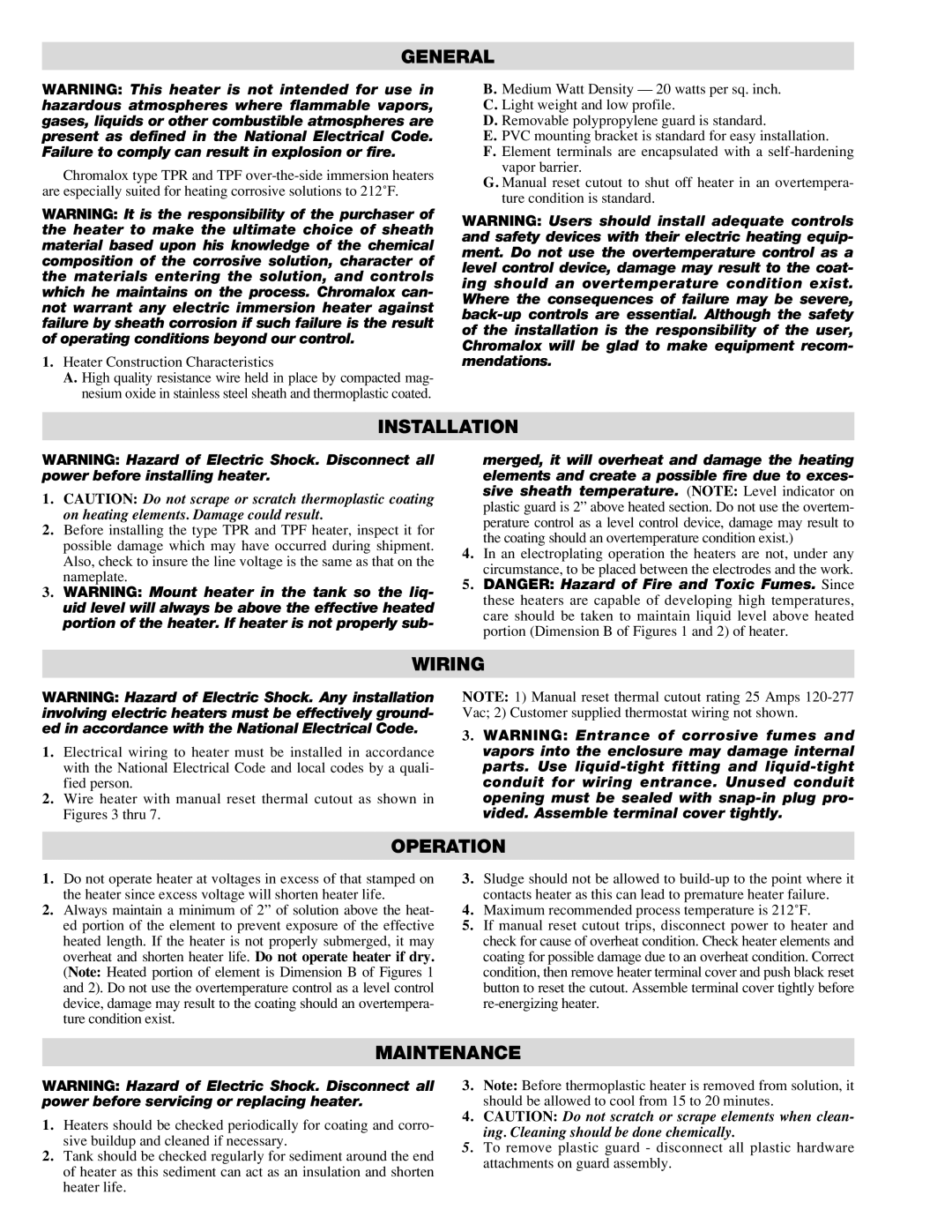PD437-4 specifications
The Chromalox PD437-4 is a cutting-edge temperature control unit designed for precision applications in various industries, including food processing, pharmaceuticals, and chemical manufacturing. This unit is renowned for its reliability and efficiency, making it a preferred choice for both operational effectiveness and enhanced safety.One of the main features of the PD437-4 is its robust temperature control capability. The unit utilizes advanced PID (Proportional-Integral-Derivative) control technology, which ensures accurate temperature regulation by continuously adjusting the heating element to maintain a setpoint. This level of precision minimizes temperature fluctuations, resulting in consistent product quality and reduced energy consumption.
The PD437-4 is equipped with a user-friendly digital interface that makes it easy to program and monitor temperature settings. The display provides real-time feedback, enabling operators to quickly assess system performance and make adjustments as necessary. Additionally, the unit supports remote monitoring capabilities, allowing for seamless integration with existing control systems and enhancing overall operational efficiency.
Another notable characteristic of the PD437-4 is its compact and modular design. This feature not only saves valuable floor space but also simplifies installation and maintenance processes. The unit is built with high-quality materials that ensure durability and longevity, even in demanding industrial environments.
The PD437-4 also prioritizes safety, incorporating multiple safety features like over-temperature protection and alarms. These mechanisms provide peace of mind, ensuring that the equipment operates within safe parameters and reducing the risk of equipment failure or hazardous conditions.
Compatibility with a range of heating elements makes the PD437-4 versatile for various applications. Users can choose from different watt densities and heater types, tailoring the unit to specific process requirements. This adaptability, along with its advanced features, positions the PD437-4 as a preferred solution for businesses looking to enhance productivity and safety in their temperature-controlled processes.
In summary, the Chromalox PD437-4 stands out due to its precision temperature control, user-friendly interface, compact design, safety features, and versatility. These characteristics make it an invaluable asset in today's fast-paced industrial environments, helping organizations to achieve optimal performance and efficiency in their operations.

